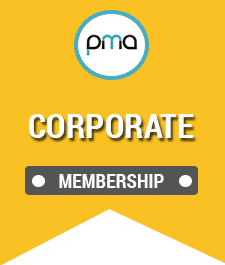The other day I was watching music videos on YouTube. One of the videos that got suggested was “Spaceman” by Babylon Zoo. Another great suggestion by YouTube!
“Spaceman” was released in January 1996. It was the lead single from Babylon Zoo’s debut album, The Boy with the X-Ray Eyes. What many British people my age will remember is where we first heard the song. It wasn’t the radio. It wasn’t Top of the Pops. It wasn’t MTV. It was through a Levi’s jeans TV ad that dropped in December 1995.
To say that the TV ad was popular is an understatement. “Spaceman” entered the UK Singles Chart at number one a few weeks later on 21 January 1996. Below is the TV ad.
The ad, titled “Planet”, was done for Levi Strauss & Co. by the ad agency BBH. Vaughan Arnell and Anthea Benton directed the ad.
Levi Strauss & Co. have good taste in music!
Thinking about Levi’s and music set off a lot of memories of famous TV ads from the 1980s and 1990s. There was a time where ‘cool’ music was synonymous with Levi’s jeans. No exaggeration. Their ad-men resurrected several pop songs from decades earlier. The songs often went on to storm the charts (again). If you’re interested there’s a good Wiki on the songs used in Levi’s ads here.
Check out 4 superb Levi’s ads below. (You’ll recognize the actor in the first video. It’s a very young Brad Pitt!)
Fantastic ads all!
The importance of music in advertising and branding
BBH and Levi Strauss & Co. clearly understood that music is critical in advertising and branding. Music has the ability to connect people and it can make us feel. Like smell, music can trigger memories. Listening to “Spaceman” triggered memories of the Levi’s ad for me. Then I started thinking about their ads from 35 years ago. This is powerful stuff!
In movies, soundtracks or pieces of music also impact how viewers feel. Imagine “Gladiator” without Hans Zimmer’s original score and songs. It wouldn’t be the same movie.
Where I think BBH hit a home run was choosing compelling songs that were not popular. (At the time). They could have chosen smash hits of the time, but this likely wouldn’t have worked. Why? This type of music is overplayed. You would have also heard it on the radio, TV, retail stores, etc., making it annoying and forgettable.
Music and audio in advertising (in 2021)
To say a lot is going on in the world of audio innovation is an understatement. Here are 6 examples.
1. A million ads
A million ads offer advertisers dynamic audio. This enables advertisers to personalize audio ads to the user. Data points include location, age, gender, weather, language, and a lot more.
We combine all the data points known about the user, their environment and the campaign to influence the creative they hear. The more we know, the more personalized versions created, making for a more personal experience. Our platform creates all of the personalized versions automatically, controlling production costs.
2. Acast
Acast, a podcast company, offers keyword targeting around audio ads. This enables advertisers to be placed around content that mentions words important to their campaigns/ads.
Acast can now give advertisers access to enhanced targeting capabilities for keywords and due to its proprietary technology, it is the first to offer enhanced targeting capabilities for IAB content categories, across the widest scale of podcast content available anywhere.
This keyword-based ad buying is being applied to the top 100 shows in the UK, top 100 in the U.S., and top 100 globally.
An important note. Acast cites Google’s determination to remove support for third-party cookies as part of their rationale for developing keyword targeting. Acast believes in “a future where ads are no longer targeted on user data, but rather on context.” An interesting vision!
3. Smart speakers
Smart speakers now allow users to purchase after they have heard an ad. Back in June last year Spotify launched their first voice-activated ad campaign. It was to ad-supported users in the UK with cosmetic brand Nars. Nars’ campaign was delivered to Amazon and Google smart speaker users. Listeners could tell their smart speakers to order samples and have them delivered to their home address.
4. Adtones
Adtones is a media service that swaps the dial tone with an advert. (The ad terminates upon connection). Operators are paid for access to subscribers. Subscribers are paid to listen to adverts.
A bidding system ensures the advertiser gets the best price for exposure. Each cent is spent on the correct target group. Subscribers have full interactive control against each message. This includes getting more information by email and SMS.
5. Attribution
Audacy’s Radio.com can track consumers who were exposed to a digital audio ad. They then report back to the advertiser how many of them visited a site and converted into a new customer. This qualifies digital audio as a performance-marketing platform. Advertisers receive detailed reporting showing, to-the-dollar, all key metrics. These include CPA, cost per site visit, and RoAS.
Attribution along with skill-building for smart speakers are two features changing digital audio.
6. The ever expanding portfollio of audio…
Audio is no longer just airtime. You have Spotify, DAX, Youtube Music, and Amazon dominating music streaming.
According to Statista, in 2020 Podcasts had 103 million people listening in the US alone. The innovation that has come with podcasts is astounding. From advertisers being able to do branded sessions to talent reading audio ads.
Music/audio in affiliate advertising?
Most (if not all) readers of this article won’t have the advertising budget of Levi Strauss & Co. This doesn’t mean that you can’t use music in affiliate advertising, though! There are a lot of sources for royalty-free music. Bensound.com is one. Then there’s Artlist, PremiumBeat, Soundotcom, and many more.
Affiliates and affiliate advertisers are by their very nature creative innovators. My question to you is this; “How will you leverage all these opportunities in 2021?”
Check out more ‘Revelations’ here.
Quote of The Week
“Never give in except to convictions of honor and good sense.”― Winston Churchill





Leave a Reply
Want to join the discussion?Feel free to contribute!